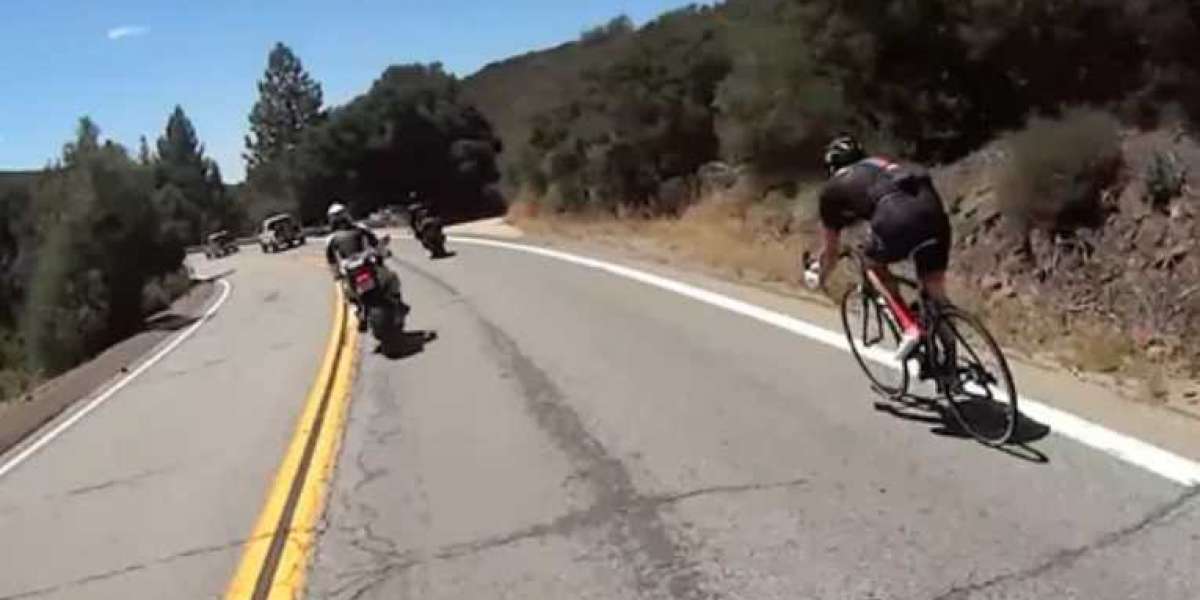When you’re behind the wheel on a scenic, winding road, it’s natural to want to make steady progress—especially if you’re stuck behind a slower vehicle. But if that vehicle is a motorcycle, you need to approach the situation differently. Motorcyclists are more vulnerable than drivers in cars, and windy road conditions can make riding much more difficult and unpredictable for them.
Overtaking a motorcyclist on a windy road is not the same as passing a car. It requires patience, timing, and a good understanding of road safety. In this blog, we’ll explore why extra caution is necessary, how wind affects motorcycle stability, and what you can do to ensure a safe passing maneuver for both you and the rider.
Why Overtaking Motorcyclists Deserves Special Attention
Motorcyclists don’t have the same physical protection that car drivers do. While your vehicle offers metal, airbags, and advanced safety features, a motorcyclist depends mostly on skill, visibility, and protective gear. That alone should give drivers a reason to slow down and think twice before overtaking.
But when windy roads enter the mix—especially with sudden gusts or strong crosswinds—the danger escalates.
The Risk of Wind for Motorcyclists
Wind can cause a motorcycle to:
Swerve unexpectedly due to crosswinds
Lose balance, especially at slower speeds or when leaning into a curve
Be pushed toward the center or edge of the road
Struggle to maintain lane discipline, especially if wind shifts suddenly
Now imagine overtaking a motorcyclist when a sudden gust hits them mid-pass. The consequences can be tragic if you’re too close or moving too fast. That’s why giving them extra space isn’t just courteous—it’s critical.
Understanding the Challenges Motorcyclists Face
Let’s break down some real-world scenarios motorcyclists deal with on windy roads:
1. Crosswinds
These winds blow across the road, often pushing the motorcycle sideways. Riders have to lean into the wind to maintain control, which can make their position unpredictable to nearby drivers.
2. Gusty Conditions
Gusts can appear suddenly, especially in mountainous or open areas. One moment the road feels calm; the next, a blast of wind shifts a motorcycle by a few feet. If you’re overtaking during that moment, the rider might unintentionally drift into your lane.
3. Blind Curves and Elevation Changes
Winding roads often come with blind curves, elevation changes, and limited visibility. A motorcycle may slow down unexpectedly to safely navigate a curve or avoid gravel. If you’re overtaking without anticipating these actions, you may endanger both of you.
How to Overtake a Motorcyclist Safely on Windy Roads
Now that we understand the risks, here’s a step-by-step guide for overtaking a motorcyclist responsibly and safely:
Step 1: Be Patient and Observant
Wait for the right opportunity. Don’t tailgate the motorcyclist or try to rush the pass. Keep a safe following distance and observe how the rider is handling the road and the wind. Look for:
Consistent speed
Lane position
Potential hazards (gravel, branches, potholes)
Step 2: Wait for a Long, Clear Straightaway
Overtaking on a curve is extremely risky. Wait until you reach a straight section of road with excellent visibility ahead and no oncoming traffic. Remember, motorcycles are smaller and can be harder to judge when it comes to speed and distance.
Step 3: Use Your Indicators Early
Always signal your intent to pass well in advance. This gives the motorcyclist a heads-up that you’re preparing to move and allows them to adjust their position safely.
Step 4: Allow Extra Room—More Than You Think
This is the golden rule: give more space than you normally would when overtaking a car. On a windy day, a rider might need to correct their path suddenly. Leave at least 3 to 5 feet or more of lateral space. If there’s a strong crosswind, even more distance is safer.
Step 5: Pass Quickly But Smoothly
Once you begin overtaking, do so confidently—but don’t floor it. A sudden burst of speed can create wind turbulence that further destabilizes the motorcycle. Keep your pass steady and swift, minimizing time side-by-side.
Step 6: Don’t Cut Back Too Soon
Make sure there’s plenty of space between your vehicle and the motorcycle before merging back into the lane. Cutting in too early can startle the rider or leave them in your blind spot.
Step 7: Be Aware of Large Vehicles and Road Conditions
If you’re in a larger vehicle like an SUV, van, or truck, your vehicle generates more wind pressure. This turbulence can cause a rider to wobble if you pass too closely. Also, uneven road surfaces, puddles, or debris on the shoulder can force the rider to shift suddenly.
Common Mistakes Drivers Make When Overtaking a Motorcyclist
Here are a few mistakes to avoid:
Tailgating: This limits the motorcyclist’s escape options and adds pressure.
Underestimating wind effects: Drivers often don’t realize how unstable a motorcycle becomes with wind pressure.
Passing on curves or hills: Visibility is limited and riders may shift their position to handle turns better.
Honking while passing: This can startle the rider and cause a sudden swerve.
Why Extra Room Matters
Let’s visualize this.
Imagine you're passing a motorcycle on a two-lane road. A strong gust hits. The rider leans slightly or swerves one foot into your lane. If you’re too close—say, just a foot or two away—you’ve left them no room for error. That space buffer acts like a safety net, helping account for unexpected movements.
Your buffer zone could be the difference between a safe pass and a life-threatening collision.
Defensive Driving Saves Lives
Overtaking a motorcyclist is a moment where your actions truly matter. Here are a few tips to keep in mind for being a defensive, responsible driver on windy roads:
Stay focused: Don’t multitask or use your phone.
Anticipate hazards: Watch for signs of upcoming curves, wind-prone areas, or road construction.
Adjust for weather: Wind isn’t the only challenge—rain, fog, or glare can also affect visibility.
Respect motorcycles: Don’t treat them like just another vehicle. They operate differently, especially in tough weather.
Overtaking Etiquette: What Riders Appreciate
Motorcyclists often feel vulnerable, especially on roads where cars treat them as obstacles. You can help by:
Waiting for a wide stretch to pass
Signaling early
Avoiding sudden lane changes
Not revving your engine while passing
Giving a wave or respectful gesture (if safe to do so—it goes a long way)
Conclusion: Be the Driver You’d Want to Meet on the Road
Windy roads can be beautiful but unpredictable. For motorcyclists, they demand heightened awareness and physical effort to stay safe and balanced. For drivers, they demand patience and empathy.
Overtaking a motorcyclist is never something to rush, especially on a windy day. A few extra seconds of caution could prevent a tragedy. Always remember: the goal isn’t just to get ahead—it’s to get everyone home safely.
FAQs
1. Why do I need to give more room when overtaking a motorcyclist?
Motorcycles are more sensitive to wind and road conditions. A strong gust or road debris could cause the rider to veer slightly. Giving extra room ensures there’s space for both of you to react safely.
2. Is it safe to pass a motorcycle on a curve or hill?
No. Visibility is limited and road conditions can change quickly. Always wait for a straight, clear stretch of road to pass a motorcyclist safely.
3. What if I misjudge the speed of an oncoming vehicle while overtaking?
Abort the pass immediately if there’s any doubt. Move back into your lane behind the motorcycle. Never try to “beat” oncoming traffic—it’s not worth the risk.







